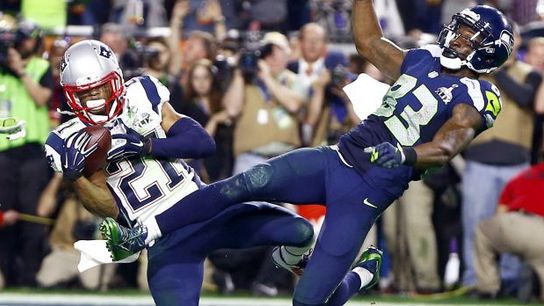History unfolded before 100 million sets of eyeballs on Sunday night as Patriots defensive back Malcolm Butler separated Seahawks wide receiver Ricardo Lockette from the football, securing one of the most dramatic interceptions in NFL history and giving New England a 28-24 victory.
That last play call, with Seattle sitting on a 2nd-and-goal from the New England one-yard line and Marshawn Lynch nowhere near the football, was the entire focus of the post-game conversation, with a near unanimous consensus that Seahawks head coach Pete Carroll and Darrell Bevell made the wrong decision. To his credit, Carroll bore the full brunt of the blame. "I told those guys that was my fault totally," he said.
Via Business Insider, here's a look at the TV copy of the pre-snap alignment before the fateful interception.

Hindsight in this case is 20/10, but what do you call in that situation?
A running play puts the numbers heavily in New England's favor, so there's an equally likely - if not greater - chance that a Lynch run loses yards instead of reaches the end zone. Lynch's own history says he probably doesn't score there.
But maybe that's reading too much into a simple situation. Lynch carried the ball 24 times for 102 yards and a touchdown, and never looked more fresh than the four-yard burst to place Seattle on the doorstep. Conventional wisdom says with the Super Bowl on the line, you place the ball in the hands of your franchise running back, not your sixth-leading receiver. And even if Lynch doesn't score on second down, it guarantees a shot on third and fourth down.
Seattle never got that shot, and they'll have the rest of their careers to think about it.
